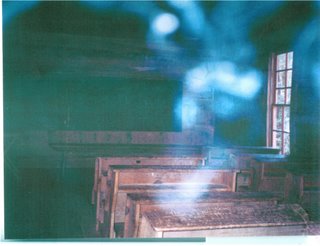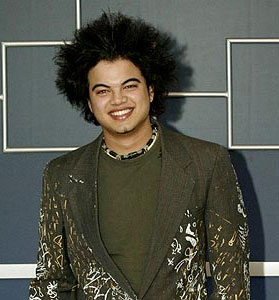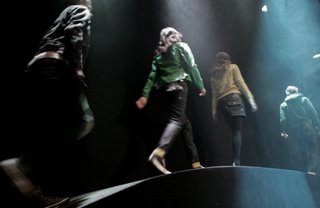What's scary "G" this time? ghost la! A month that heaps of chinese scare to walk out alone late night. July in lunar calendar. lol, so i gonna talk about Ghost today. uh ho, what you think about the word ghost? ever sawthem?met them? some did, some didn't. For those people that saw, met before , what was your first reaction when "feel" them? Scared? Excited? Shocked? ishhh... Tell your story and experience to me.
Here is a basic description, an encyclopedia meaning about ghost. A ghost is an alleged non-corporeal manifestation of a dead person (or, sometimes, an animal or a vehicle). It is often claimed to be a manifestation of the spirit or soul of a person which has remained on Earth after death. According to some beliefs, a ghost may be the personality of a person after his or her death, and not directly tied to the soul or spirit. Every culture in the world carries stories about ghosts, though they often disagree as to what ghosts are and whether they are just figments of imagination or a part of reality. There is much debate on whether ghost are spirts of deceased people or a naturally occuring phenomenon. Some scientist believe that ghostly images and sounds occur as a result of the natural environment "playing back" past events in a manner similar to that of a tape recorder. Ghosts are often depicted of a human size and shape (although some accounts also mention animal ghosts), but typically described as "silvery", "shadowy", "semitransparent", "misty", "human-like", "big", "scary" or "fog-like". Parapsychologists refer to the "substance" of which ghosts and other spirits are made as "ectoplasm". Ghosts, it is maintained, do not have a physical body like human beings, but only a subtle astral body. Sometimes they do not manifest themselves visually but in terms of other phenomena, such as the movements of an object, spontaneous throwing of a light switch, noises, etc., which supposedly have no natural explanation. In the West, those who believe in ghosts sometimes hold them to be souls that could not find rest after death, and so linger on Earth. This inability to find rest is often explained as unfinished business, such as a victim seeking justice or revenge after death. Criminals sometimes supposedly linger to avoid Purgatory or Hell. It is sometimes held that ghosts reside in Limbo or Purgatory. Although this view was once propounded by some Catholic theologians, it is no longer believed according to the Catechism of the Catholic Church. It is worth noting that while mainstream Protestants and Evangelical Christians believe in the existence of principalities, they do not believe in ghosts (as spiritual manifestations of the dead) and would generally attribute more violent ghosts, such as poltergeists, to the actions of demons. Some ghost researchers approach the possibility of ghosts from a more scientific standpoint, seeking to find correlations and causal relationships between recordable phenomena and the supposed presence of ghosts. Those who follow this approach most often believe that ghosts are not actual disembodied souls or spirits, but rather they are impressions of psychic energy left behind by a deceased (or in some rare cases, still living) person. They assert that traumatic events (such as a murder or suicide) cause mental energy to be released into the world, where it may be experienced by other people who are sensitive to its presence. This way of thinking classifies ghosts in the same category of preternatural unexplained phenomena as poltergeists/telekinesis, ESP, and telepathy. Theories from this approach often encounter difficulties in explaining ghosts that appear to be sentient, such as those which appear to answer questions or react to specific actions from people present. However, it is claimed as a possibility that enough of a dead person's psyche might be imprinted on an environment so as to give the likeness of thought or autonomy. Other ghost researchers
In Asian cultures, such as China, there are some people who hold a belief in reincarnation. Ghosts are those souls that refused to be "recycled" because they have unfinished business, similar to those in the West. Exorcists can either help a ghost to be driven away or reincarnated. In Chinese tradition, apart from being reincarnated, a ghost can also become immortal and become a demigod, or it can go to hell and suffer for eternity, or it can die again and become "ghost of ghost"(魙). The Chinese also believe that some ghosts, especially those who died of drowning, kill people in order to rob them of their rights to reincarnation. The victims of such paranormal "murders" are called tìsígu (替死鬼), literally "substitute death ghost" or "substitute devil" which in Chinese is a synonym for scapegoat. Also in China, particularly in the Guangzhou area, the Chinese people usually hold a Chinese version of the Day of the Dead ritual for their ancestors in autumn. The ritual consists of burning Hell Bank Notes and other luxury items made of paper mache as well as pouring wine three times on their grave and leaving food. An older ritual is for the living family to prepare a grand feast for their dead relatives "returning" home. During the time of feast, those relatives amongst the living are not allowed to leave their bedrooms regardless of how much noise the ghost makes. Very detailed information about ghosts is given in Garuda Purana, a scripture from Vedic (Hindu) tradition. According to this Purana,humans who perform sins during their lifetime will be reborn as ghosts. This is an excerpt from the coversation between a Brahmana(a noble man) and a group of ghosts as mentioned in Garuda Purana. The brahmana said:'You have told us facts about your names; now let us know about your way of life as ghosts as well as your food.' The ghosts said:'We stay where people do not follow the Vedas, where there is no feeling of shame for falsehood, no faith in religion, no sense of discipline, no inclination for forgiveness, no patience and no knowledge. We trouble the person who does not perform Sraddha or Tarpana. We eat his flesh and suck his blood. Now hear about our food which is most despicable in the world. Something of this you have already seen. We shall now tell you something unknown to you. Vomiting, waste, cough, urine and tears - these we eat and drink. Do not ask us further, O brahmana, we are ashamed to tell you about our food. We are ignorant, in dark, fools and puzzled. Suddenly have we remembered about our previous births. We are neither humble, nor wild and we know nothing.' Buddhist Samsara includes the concept of the hungry ghost realm. Sentient beings in that realm are referred to as "hungry ghosts" because of their attachment to this world. Asuras are also referred to as "fighting ghosts". Both the West and the East share some fundamental beliefs about ghosts. They may wander around places they frequented when alive or where they died. Such places are known as "haunted"; the rounds they go on are known as "hauntings". They often wear the sort of clothing in which they would have been seen when alive.
A bit too long huh? sorry for those reader that impatient and thanks for those reader that finished it. For those that unable to finish the words, i have some pictures bottom. Appreciated it. Have to search more information, like that will show how proffesional i am . For those that interested with it, more to come after.hohoho

A manufactured image of a ghostly woman ascending a staircase

The Brown Lady of Raynham Hall
 Taken with digital camera in Greenbriar Schoolhouse in Gatlinburg, Tenn.
Taken with digital camera in Greenbriar Schoolhouse in Gatlinburg, Tenn.


 3 pictures above taken from member of Malaysian Ghost Reseach
3 pictures above taken from member of Malaysian Ghost Reseach
sources: http://http://www.ghostweb.com/free.html,
http://en.wikipedia.org/wiki/Ghost











 Taken with digital camera in Greenbriar Schoolhouse in Gatlinburg, Tenn.
Taken with digital camera in Greenbriar Schoolhouse in Gatlinburg, Tenn.

 3 pictures above taken from member of Malaysian Ghost Reseach
3 pictures above taken from member of Malaysian Ghost Reseach










